Introduction
Chhau Dance, a traditional Indian folk dance form, is a mesmerizing tapestry of art, culture, and history. This unique dance style, with its roots in the eastern states of India, transcends mere movements; it’s a vivid expression of centuries-old traditions, storytelling, and sheer artistic brilliance. In this article, we delve deep into the captivating world of Chhau Dance, exploring its origins, regional variations, unique elements, cultural significance, and much more.
Regional Variations
Chhau Dance has evolved into three distinct regional variations: Seraikella Chhau, Mayurbhanj Chhau, and Purulia Chhau. Each of these styles has its own unique characteristics, repertoire, and cultural influences. These regional variations contribute to the diversity and richness of Chhau Dance.
Seraikella Chhau
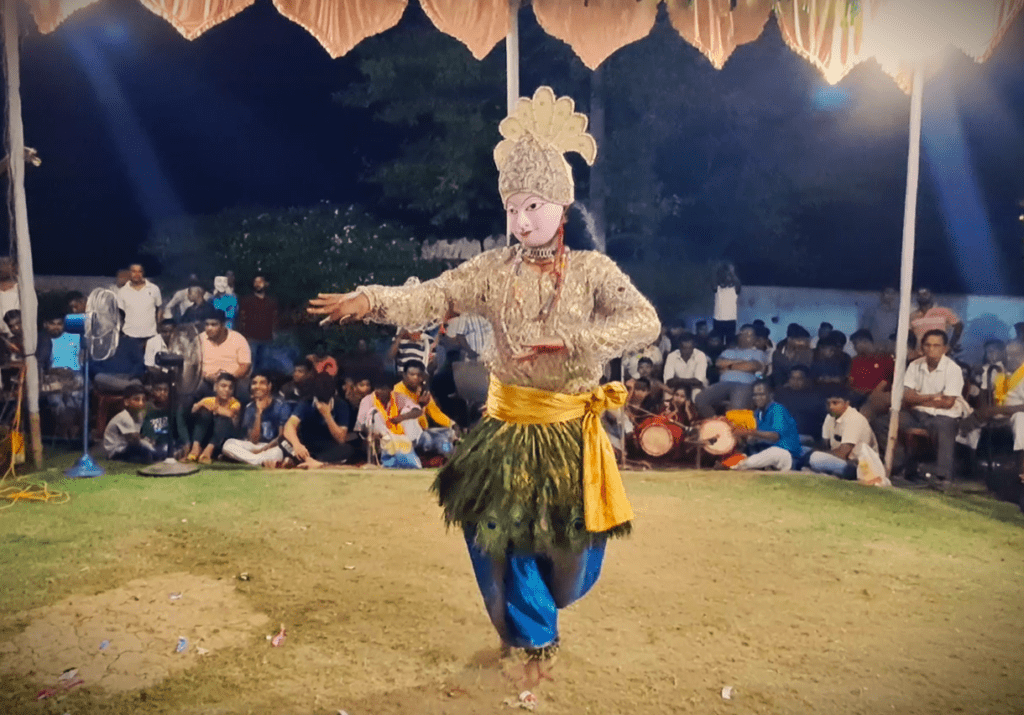

Seraikella Chhau, a mesmerizing dance form, thrives in the heart of Singhbhum, once part of Orissa and now Jharkhand. It flourishes amidst the Saranda and Bangriposi hills, preserving its unique traditions. This art comes to life during Chaitra Parva, the Spring Festival, with elaborate rituals and performances witnessed by thousands.
Originating from the parikhanda warrior training, this dance showcases graceful and precise movements. The exercises are performed in the presence of a guru, with participants wearing white dhotis and reciting rhythmic syllables. The routines include stylized gaits and symbolic actions.
Seraikella Chhau is distinct for its masks, worn exclusively by men and boys. Performances are brief due to the intricate masks. Musical accompaniment features instruments like nagra, dhol, and shehnais, along with traditional tunes. Each performance begins with music from the Jatra Ghat ritual.
This art form is not just entertainment; it’s a testament to tradition, blending martial arts, storytelling, and captivating dance. Seraikella Chhau embodies the rich heritage of the region, keeping its cultural essence alive.
Mayurbhanj Chhau,


Mayurbhanj Chhau is a traditional Indian dance form that originates from the Mayurbhanj district in the state of Odisha. While it is often associated with performers wearing colorful masks, it is also performed without masks on certain occasions.
In Mayurbhanj Chhau performances without masks, the focus is primarily on the intricate footwork, movements, and storytelling aspects of the dance. Dancers wear traditional costumes and use body language and gestures to convey the narrative of the performance. The dance may still include elements of martial arts and acrobatics, showcasing the dancers’ skill and physical prowess.
Performances without masks in Mayurbhanj Chhau allow for a deeper connection between the performers and the audience, as the facial expressions of the dancers become a crucial means of communication. This variation of the dance form still carries the rich cultural and artistic traditions of Mayurbhanj Chhau, making it a captivating and expressive art form even without the distinctive masks.
Purulia Chhau
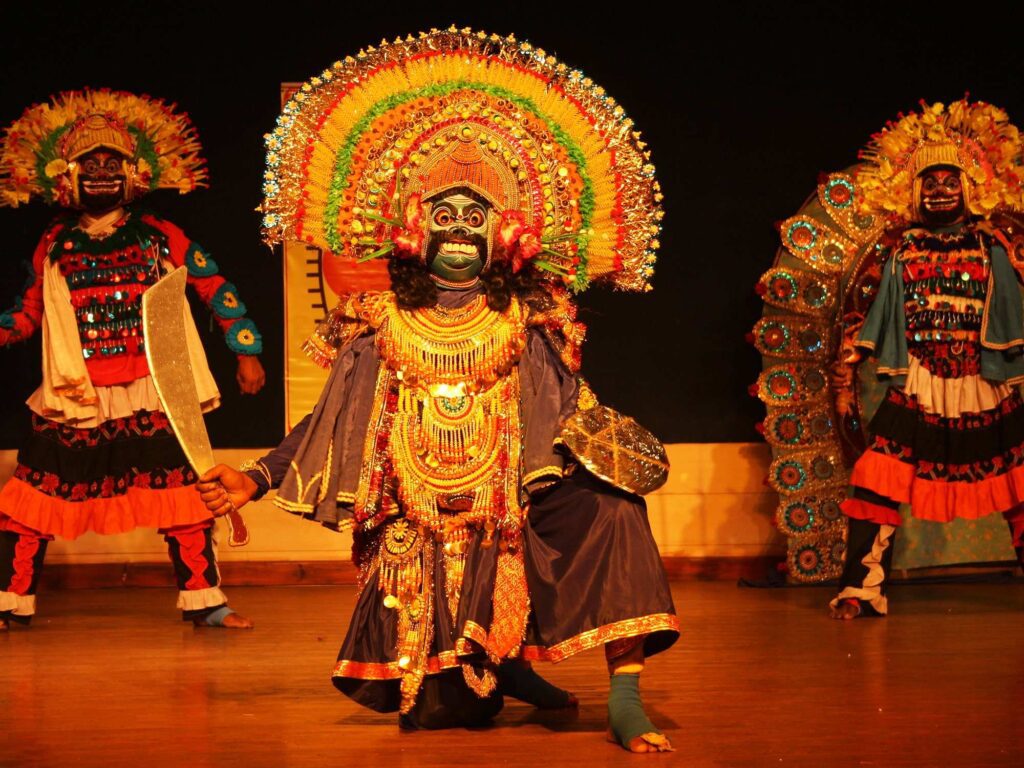

Purulia Chhau, a captivating folk dance hailing from West Bengal’s Purulia district, is a testament to the region’s rich cultural heritage. This vibrant dance form distinguishes itself with its robust and energetic performances, featuring dynamic movements such as forceful footwork, expressive postures, and vigorous gestures. Unlike other Chhau styles, Purulia Chhau has preserved its strong folk character without depending on royal patronage, allowing it to retain its authenticity and vigor. Dancers adorned in elaborate costumes, reminiscent of folk and theatrical traditions, captivate audiences with their spirited dances on open-ground platforms, often lasting late into the night. Accompanied by traditional instruments and expressive masks, Purulia Chhau draws its inspiration from Indian epics and mythology, making it a cherished and dynamic expression of West Bengal’s cultural diversity.
At the heart of Purulia Chhau are its spirited dancers who bring life to this captivating art form. Their dynamic movements, including bent-knee foot stamping, short jumps, and lively spins, convey tales from the Ramayana, Mahabharata, and Puranic mythology with great enthusiasm. The use of expressive masks, crafted with meticulous detail, amplifies their storytelling, freeing them from facial expressions and emphasizing body language. The rustic masks, complemented by headdresses, showcase wide-open eyes and are adorned with peacock feathers, jaris, and hair. This dance tradition, performed to the lively tunes of traditional instruments, has continued to enthral audiences both locally and internationally, making Purulia Chhau a vibrant and cherished part of India’s cultural tapestry.
The Unique Elements of Chhau Dance
Masks and Costumes
A hallmark of Chhau Dance is the use of intricate masks and vibrant costumes. These masks, often crafted from clay, depict characters from mythology and folklore. The costumes, adorned with vibrant colors and ornate designs, add a visual spectacle to the performance.
Narrative Performances
Chhau Dance is not merely a dance; it is a storytelling art. Dancers use graceful hand movements and body language to convey narratives from Hindu epics like the Ramayana and the Mahabharata. The absence of spoken words adds to the enigmatic charm of Chhau Dance.
Acrobatics and Martial Arts
Chhau Dance incorporates elements of acrobatics and martial arts, making it a physically demanding and visually impressive art form. Dancers execute flips, spins, and other acrobatic feats, captivating audiences with their agility and skill.
Music and Instruments
The dance is accompanied by traditional music played on instruments such as the dhol (drum), shehnai (a wind instrument), and kharka (cymbals). The rhythm and melodies of the music complement the dance movements, creating a harmonious performance.
The Origins of Chhau Dance
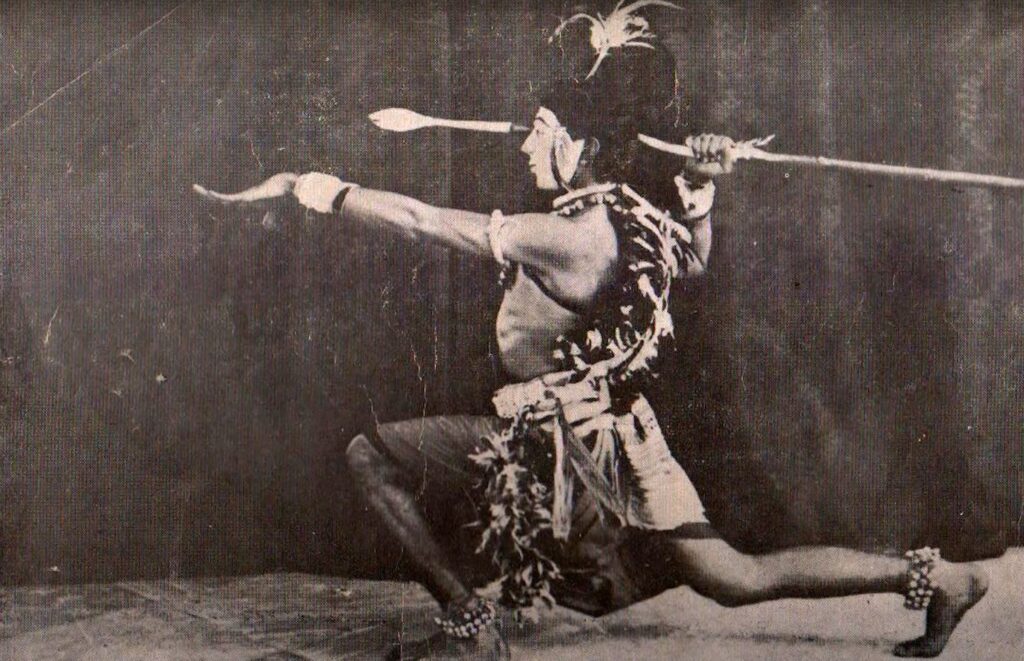

Chhau dance, deeply rooted in the forested regions of Jharkhand, West Bengal, and Odisha, holds a special place in the cultural tapestry of India. It is said to be a precious gift from the land of Odisha, a result of the historical backdrop of the Kalinga Empire. Its evolution can be traced back to a time when the Kalinga region was drenched in blood due to Emperor Ashoka’s conquest ambitions. In an effort to instill a sense of security among the populace, the Kharwel Dynasty mandated the adoption of martial education, focusing on sword and shield training, in every village. The villagers embraced this initiative wholeheartedly, and the art of Farikhanda, which had no practical use in times of peace, transformed into a form of entertainment.The practice of Farikhanda martial art spread to various regions, including Northeastern Jharkhand, Bengal, and Odisha. Today, these areas are considered the epicenter of Chhau dance, which evolved from this martial art form. Emperor Kharwel encouraged common citizens to train like soldiers, resulting in a skilled group of individuals who not only defended their villages but also used their martial skills as a form of entertainment.
This dance form uniquely blends folk and classical elements, emphasizing physical movements and gestures.
The word “Chhau” is believed to have been derived from the Sanskrit word “Chhaya,” which means a mask. This alludes to one of the most striking features of Chhau Dance – the use of elaborate masks.
Cultural Significance
Chhau Dance holds immense cultural significance in the communities of eastern India. It is often performed during festivals and special occasions, serving as a form of worship and a means of expressing cultural identity. The dance embodies the history and traditions of the region.
The Spiritual Essence of Chhau Dance
Chhau dance is not just a physical performance; it is a spiritual journey. Like in Indian culture, where achieving Siddhi requires intense concentration and immersion in Sadhana, Chhau dancers find their inner selves through the dance. As they don elaborate masks, their identities become inseparable from the characters they portray.
In Chhau dance, communication happens without spoken words or gestures; it is conveyed solely through movements, expressions, and dance. Dancers naturally meditate on the characters they embody, becoming one with them. Just as a devotee becomes immersed in devotion while chanting the name of their deity, Chhau dancers become the heroes they depict.
It’s almost as if Chhau dance is an ancient form of Shiva’s Tandava, where meditation is not achieved through words but through the body. Here, the medium of Sadhana is not the voice or mouth, but the soul and the physical vessel that houses it. The essence of ‘Chha’ dance lies in its silence, allowing the dancers to transcend the boundaries of expression.
The Dominance of ‘Veer’ Rasa
While Shringara (love and beauty) is often considered the king of rasas (emotions) in classical Indian dance, Chhau dance places greater emphasis on ‘Veer’ rasa (heroic valor). It prioritizes heroism over adornment, making it a unique and compelling dance style.
In Chhau dance, the essence of ‘Veer’ rasa permeates every movement and expression, creating a powerful and captivating performance. While Bhakti (devotion) and Yoga (spiritual practice) both play integral roles in this art form, they are approached with a distinctive spirit. Bhakti is expressed with a feminine spirit, while Yoga is embodied with a corresponding spirit, adding depth and diversity to Chhau dance.
Chhau Dance on the Global Stage
In recent years, Chhau Dance has gained recognition and popularity beyond Indian borders. Performances and workshops have been held worldwide, showcasing the beauty and complexity of this art form. Chhau Dance has become a cultural ambassador, bridging gaps and fostering cross-cultural understanding.
UNESCO has recognized Chhau dance as an intangible cultural heritage of humanity. This traditional Indian dance form, known for its vibrant and energetic movements, elaborate masks, and rich cultural significance, was added to UNESCO’s Representative List of the Intangible Cultural Heritage of Humanity in 2010. This recognition highlights the importance of Chhau dance in preserving and celebrating the cultural heritage of the region where it originates.
https://ich.unesco.org/en/RL/chhau-dance-00337
Learning Chhau Dance
Learning Chhau Dance is a rigorous and dedicated process. It involves years of training under skilled gurus who pass down the intricate movements, expressions, and techniques to the next generation of dancers. The training is physically demanding but deeply rewarding.
Chhau Dance Festivals
Chhau Dance festivals draw enthusiasts and artists from across the globe. These events celebrate the art form’s diversity and provide a platform for showcasing talent, fostering cultural exchange, and creating lasting memories.

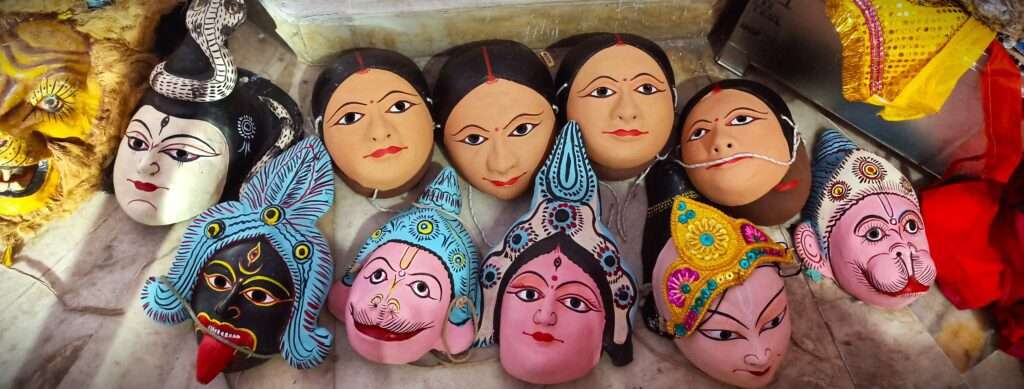

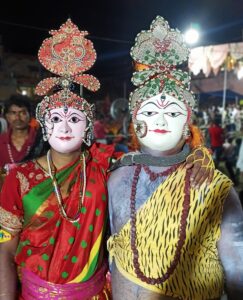
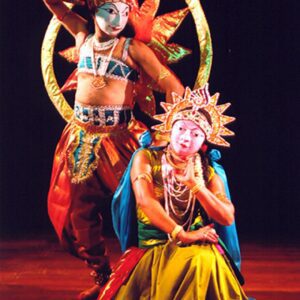


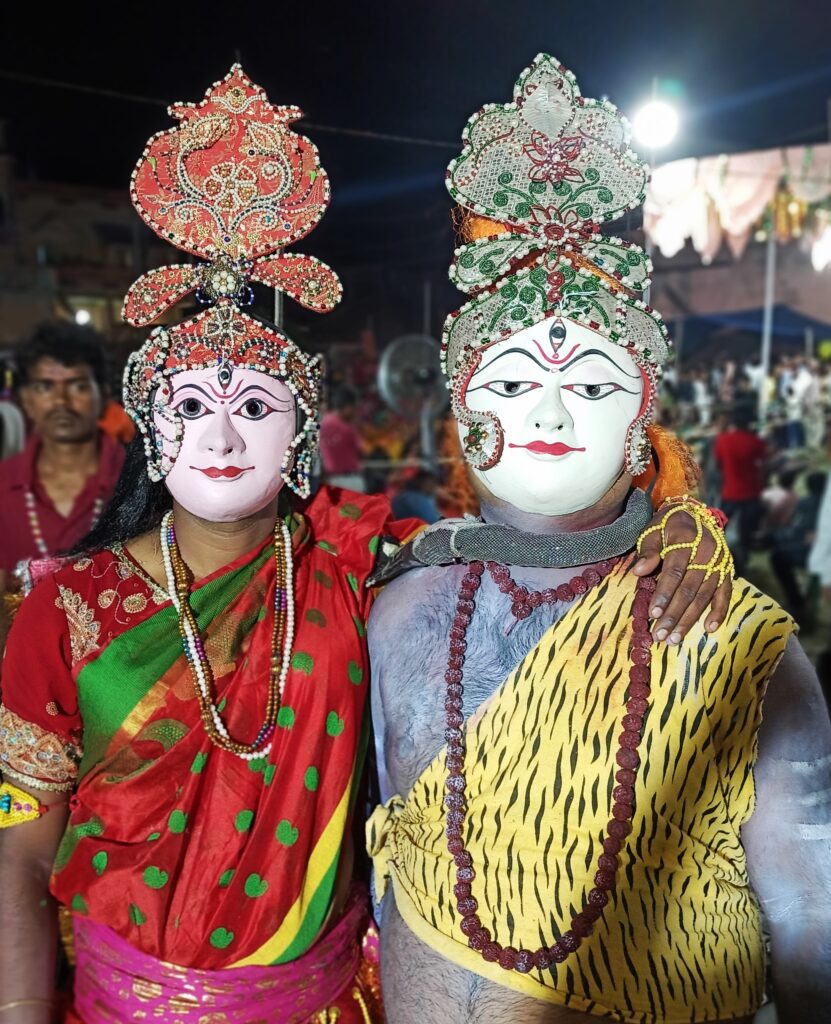
Pingback: Seraikela Chhau Dance - A Cultural Marvel of Eastern India -